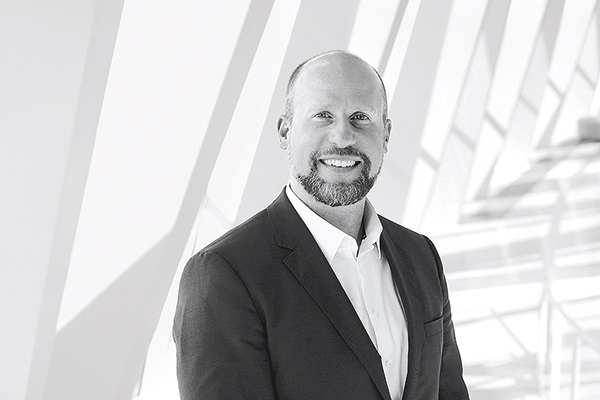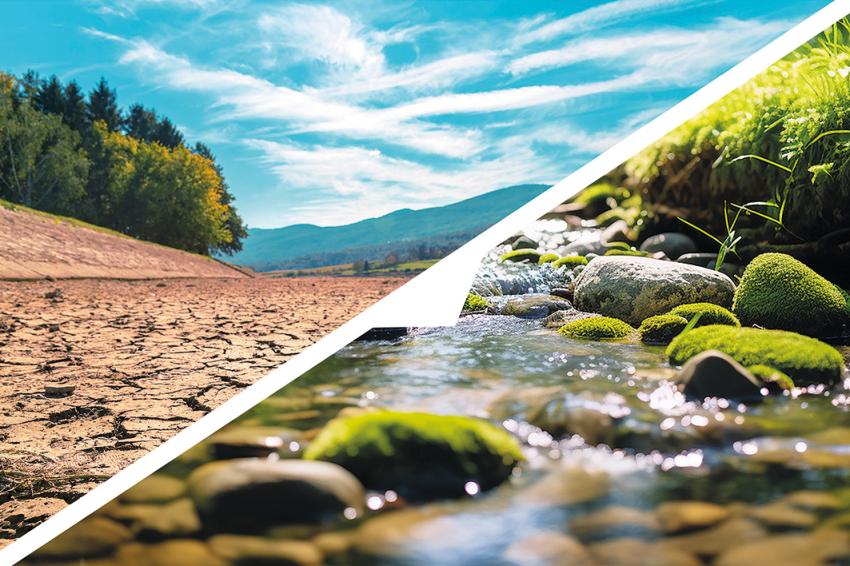Efficient and Sustainable Water Treatment for Cooling Systems
Economy and Ecology in Harmony
Micropollutants such as industrial chemicals, cleaning agents or surfactants are increasingly found in dissolved form as water pollutants in the aquatic environment. Wastewater treatment plants, for example, are therefore faced with the major challenge of efficiently removing these micropollutants using suitable processes to meet the requirements of nature and society as well as the German Drinking Water Ordinance. This task is made more difficult by the fact that the chemicals used by industry have a long half-life. For some biocides, for example, their half-life is over a year. As a result, water quality and biodiversity are permanently impaired and damaged.
Even if the purification performance of wastewater treatment plants is generally good, there is currently no practical and economical method for removing anthropogenic trace substances such as biocides to a sufficient extent for the subsequent production of drinking water. As a result, further removal of trace substances in wastewater treatment plants by means of a fourth treatment stage is being called for and publicly discussed. This extra step is a challenging and expensive task that can only be partially achieved technologically by means of ozonization, oxidation processes and the combined use of reverse osmosis and nanofiltration. These methods are not only very complex in terms of process management, but are also usually associated with very high costs for wastewater treatment plants.
New Process Easy to Implement — Bioeconomy Instead of Chemistry
The principle of "prevention is better than cure" applies particularly to such complex tasks as safeguarding drinking water quality and biodiversity. This imperative can be achieved with the following three rules:
- Firstly, the use of environmental pollutants of any kind in industrial processes must be avoided to a greater extent in future and replaced with environmentally-friendly alternatives.
- Secondly, the existing minimization requirement for the use of biocides should be applied and enforced more consistently.
- And thirdly, petroleum-based inhibitors should be replaced by ecological substitutes based on renewable raw materials that are completely biodegradable.
The company Blue Activity is breaking new ground in industrial water treatment with an innovative and sustainable approach. This cleantech company is replacing biocides with natural microorganisms and phosphates with biodegradable biopolymer-based inhibitors, which will completely eliminate micro-pollutants that are very difficult to eliminate in future. The new, natural water treatment pioneered by Blue Activity is easy for operators of evaporative cooling systems to implement during operation in accordance with the German 42nd BImSchV (federal immission control act).
Industrial companies have an "all-round carefree package" at their disposal: this platform includes the natural microorganisms used as operating materials. Additionally, the program offers online monitoring including biofilm and scaling/deposition sensors, online corrosion and fill level measurement. Online monitoring enables 24/7 monitoring and visualizes all relevant KPIs in real time via dashboard. This turnkey package makes it easy to optimize the operation mode and intervene quickly if necessary. The offer is rounded off by a needs-based, on-site service by competent employees.
During the service visits, a Legionella rapid test is also carried out to check the microbial parameters and hygiene safety. The rapid test makes it possible to provide an indication of the legionella present in the cooling water (serogroups 1, 2 – 14) directly on site. The reproducible result is available after just 25 minutes.
Major Savings with Improved Water Quality
Under the motto: "With nature instead of against nature", the subsequent water quality for cooling systems can be sustainably improved. In addition, the need for supplementary water can be significantly reduced by replacing 100% of classic biocides with natural-based microorganisms.
The water savings in evaporative cooling systems results from the extensively improved heat transfer compared to the use of biocides. This modification leads to an overall increase in the efficiency (cooling capacity) of the evaporative cooling system, as biofilms are continuously minimized by the microorganisms. As a result, the overall balance of the evaporative cooling system improves thermodynamically in terms of energy transfer. This optimization helps to conserve natural resources and protect water while improving water quality at the same time. Further water savings can be achieved by sensibly increasing the thickening rate depending on the input water quality. The successful substitution of hazardous substances with biocides as well as additives for corrosion protection and petroleum-based hardness stabilization results in a circular use of water.
Compared to conventional, commercially available additives, the concentration of phosphates in these innovative inhibitors is reduced by around 80%.
The positive effect: a substantial reduction in pollutant loads in wastewater. Industrial companies can therefore reduce water consumption by up to 52% and sustainably improve wastewater quality. Against the backdrop of constantly increasing water scarcity, this efficiency is of great added value for people and society alike. More resourceful and sustainable water treatment for cooling systems makes a practical, economical and ecological contribution to meeting the environmental challenges of our time.
Improving CSRD Sustainability Indicators
German legislation in the form of the Hazardous Substances Ordinance has long pushed for the prudent and reduced use of hazardous substances in the operation of evaporative cooling systems. This policy guidance is a thoroughly positive approach, but one that can still be optimized.
Complete substitution of hazardous substances would be a much better and more sustainable solution in terms of climate change and water protection.
With innovative cooling water conditioning including sustainable system cleaning, the operator not only fulfills several sustainability goals of the United Nations ("SDGs"), but also demonstrably improves environmental and energy indicators. The approach is particularly beneficial for larger and listed companies, which have to collect various key figures and data as part of the European Sustainability Reporting Directive (CSRD). This is because the new European Sustainability Reporting Standards (ESRS) developed as part of the CSRD can be significantly improved by Blue Activity’s treatment method for the specific standards water/biodiversity (E3-4) and climate change (E1).
The microbiology-based concept not only enables industrial companies to reduce their operating costs, but also to benefit directly from fulfilling the very demanding obligations of European sustainability reporting.
Next Task: Reducing Sewage Sludge
The new process also improves downstream sewage treatment processes. The functional, food-safe and non-genetically modified microorganisms added to the water as a biocide replacement reduce the carbon load in the wastewater, among other things. This reduction improves the quality of the wastewater and facilitates the downstream treatment processes. As part of its R&D initiatives, Blue Activity is currently working on a sustainable solution to reduce sewage sludge by adding special microorganisms. This is because sewage sludge currently amounts to almost two million tons of dry matter per year in Germany alone. Around 80 % of the sewage sludge is thermally recycled. Incineration results in avoidable CO2 emissions. New ways are therefore needed to enable agricultural businesses to safely reuse the sewage sludge - which contains high levels of phosphorus, among other things - in the form of fertilizer. Phosphorus is not only a raw material with limited availability, but also an important nutrient for flora and fauna. If circular processing were successful, the mineral fertilizer would no longer have to be imported in the future to meet the increasing demand.
Author:
 Lars Havighorst, CEO, Blue Activity
Lars Havighorst, CEO, Blue Activity







